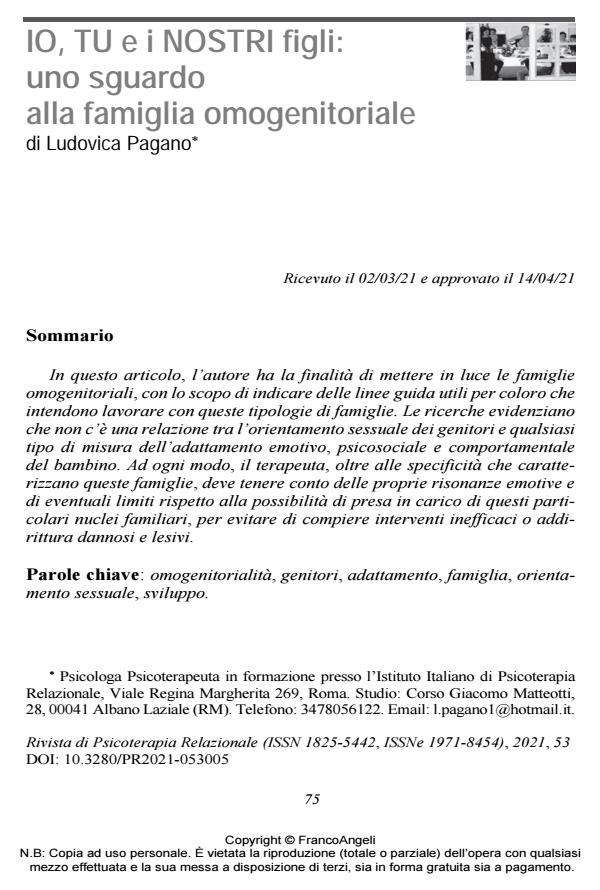Me, you and our children. A look at homoparental families
Journal title RIVISTA DI PSICOTERAPIA RELAZIONALE
Author/s Ludovica Pagano
Publishing Year 2021 Issue 2021/53
Language Italian Pages 21 P. 75-95 File size 233 KB
DOI 10.3280/PR2021-053005
DOI is like a bar code for intellectual property: to have more infomation
click here
Below, you can see the article first page
If you want to buy this article in PDF format, you can do it, following the instructions to buy download credits

FrancoAngeli is member of Publishers International Linking Association, Inc (PILA), a not-for-profit association which run the CrossRef service enabling links to and from online scholarly content.
In this article, the author discusses about homoparental families and the aim is to provide useful guidelines for professionals who want to work with them. Recent studies have proven there is no correlation between the par-ents’ sexual orientation and the emotional, behavioural and psychoso-cial development in children. Nonetheless, homoparental families are characterized by distinctive features which any psychotherapist should know. Moreover, the psychotherapist should be aware of his/her own emotional resounances and limits with respect to the subject in order to prevent uneffective or dangerous treatment for the patient.
Keywords: homoparental family, parents, family, sexual orientation, child development
- Le sfide della psicoterapia di coppia e familiare alla luce delle nuove configurazioni di famiglie Carlo de la Ville sur Illon, Alba Saddi, in RIVISTA DI PSICOTERAPIA RELAZIONALE 61/2025 pp.27
DOI: 10.3280/PR2025-061002
Ludovica Pagano, IO, TU e i NOSTRI figli: uno sguardo alla famiglia omogenitoriale in "RIVISTA DI PSICOTERAPIA RELAZIONALE " 53/2021, pp 75-95, DOI: 10.3280/PR2021-053005